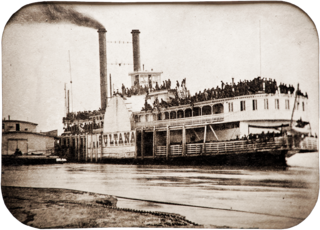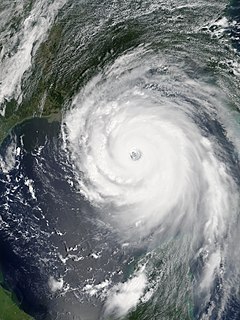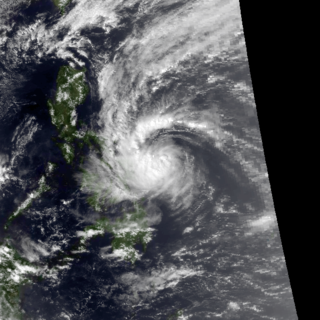
Rhiannon is a major figure in the Mabinogi, the medieval Welsh story collection. She appears mainly in the First Branch of the Mabinogi, and again in the Third Branch. She is a strong-minded Otherworld woman, who chooses Pwyll, prince of Dyfed, as her consort, in preference to another man to whom she has already been betrothed. She is intelligent, politically strategic, beautiful, and famed for her wealth and generosity. With Pwyll she has a son, the hero Pryderi, who later inherits the lordship of Dyfed. She endures tragedy when her newborn child is abducted, and she is accused of infanticide. As a widow she marries Manawydan of the British royal family, and has further adventures involving enchantments.

Sultana was a Mississippi River side-wheel steamboat, which exploded on April 27, 1865, killing 1,168 people in the worst maritime disaster in United States history.

The Farm is an intentional community in Lewis County, Tennessee, near the town of Summertown, Tennessee, based on principles of nonviolence and respect for the Earth. It was founded in 1971 by Stephen Gaskin, and 300 spiritual seekers from Haight-Ashbury and San Francisco. The Farm was the setting for "the rebirth of midwifery in the United States" and the creation of "the modern home-birth movement." Its members have founded a number of nonprofit organizations, including Plenty International, a relief and development organization, and Swan Conservation Trust, who established the 1,358 acres (550 ha) Big Swan Headwaters Preserve. The Farm has approximately 200 members and residents.

Hurricane Georges was a powerful and long-lived Cape Verde Category 4 hurricane which caused severe destruction as it traversed the Caribbean and Gulf of Mexico in September 1998, making seven landfalls along its path. Georges was the seventh tropical storm, fourth hurricane, and second major hurricane of the 1998 Atlantic hurricane season. It became the most destructive storm of the season, the costliest Atlantic hurricane since Hurricane Andrew in 1992 and remained the costliest until Hurricane Charley in 2004, and the deadliest since Hurricane Gordon in 1994. Georges killed 604 people, mainly on the island of Hispaniola, and caused extensive damage resulting at just under $10 billion in damages mostly in St. Kitts and Nevis, Puerto Rico and Hispaniola.

Hurricane Fifi was a cataclysmic tropical cyclone that killed over 8,210 people in Honduras in September 1974, ranking it as the third deadliest Atlantic hurricane on record, only behind Hurricane Mitch in 1998, and the 1780 hurricane. Fifi is also the first billion-dollar hurricane not to make landfall in the U.S. Originating from a strong tropical wave on September 14, the system steadily tracked west-northwestward through the eastern Caribbean. On September 16, the depression intensified into Tropical Storm Fifi just off the coast of Jamaica. The storm quickly intensified into a hurricane the following afternoon and attained its peak intensity on September 18 as a strong Category 2 hurricane. Maintaining hurricane intensity, Fifi brushed the northern coast of Honduras before making landfall in Belize the following day. The storm quickly weakened after landfall, becoming a depression late on September 20. Continuing westward, the former hurricane began to interact with another system in the eastern Pacific.

SS Wairarapa was a New Zealand ship of the late 19th century plying the route between Auckland, New Zealand and Australia. It came to tragic fame when it hit a reef at the northern edge of Great Barrier Island, about 100 km out from Auckland, and sank. The death toll of around 130 people remains one of the largest such losses in the country's history. The ship was named for the Wairarapa region.

Hurricane Katrina was a large Category 5 Atlantic hurricane that caused over 1,800 deaths and $125 billion in damage in August 2005, particularly in the city of New Orleans and the surrounding areas. It was at the time the costliest tropical cyclone on record and is now tied with 2017's Hurricane Harvey. The storm was the twelfth tropical cyclone, the fifth hurricane, and the third major hurricane of the 2005 Atlantic hurricane season, as well as the fourth-most intense Atlantic hurricane on record to make landfall in the contiguous United States.

As the center of Hurricane Katrina passed southeast of New Orleans on August 29, 2005, winds downtown were in the Category 1 range with frequent intense gusts. The storm surge caused approximately 23 breaches in the drainage canal and navigational canal levees and flood walls. As mandated in the Flood Control Act of 1965, responsibility for the design and construction of the city's levees belongs to the United States Army Corps of Engineers and responsibility for their maintenance belongs to the Orleans Levee Board. The failures of levees and flood walls during Katrina are considered by experts to be the worst engineering disaster in the history of the United States. By August 31, 2005, 80% of New Orleans was flooded, with some parts under 15 feet (4.6 m) of water. The famous French Quarter and Garden District escaped flooding because those areas are above sea level. The major breaches included the 17th Street Canal levee, the Industrial Canal levee, and the London Avenue Canal flood wall. These breaches caused the majority of the flooding, according to a June 2007 report by the American Society of Civil Engineers. The flood disaster halted oil production and refining which increased oil prices worldwide.
Hurricane Katrina had many social effects, due the significant loss and disruption of lives it caused. There were above 1,800 lives lost and over 400,000 homeless people. The hurricane left hundreds of thousands of people without access to their homes or jobs, it separated people from relatives, and caused both physical and mental distress on those who suffered through the storm and its aftermath, such as Post-traumatic stress disorder (PTSD).

Tropical Storm Thelma, known in the Philippines as Tropical Storm Uring, was one of the deadliest tropical cyclones in Philippine history, killing at least 5,081 people. Forming out of a tropical disturbance on November 1, 1991, several hundred kilometers north-northeast of Palau, the depression that would become Thelma tracked generally westward. After turning southwestward in response to a cold front, the system intensified into a tropical storm on November 4 as it approached the Philippines. Hours before moving over the Visayas, Thelma attained its peak intensity with estimated ten-minute sustained winds of 75 km/h (45 mph) and a barometric pressure of 992 mbar. Despite moving over land, the system weakened only slightly, emerging over the South China Sea on November 6 while retaining gale-force winds. Thelma ultimately succumbed to wind shear and degraded to a tropical depression. On November 8, the depression made landfall in Southern Vietnam before dissipating hours later.

Voyager is the third book in the Outlander series of novels by Diana Gabaldon. Centered on time travelling 20th century doctor Claire Randall and her 18th century Scottish Highlander warrior husband Jamie Fraser, the books contain elements of historical fiction, romance, adventure and fantasy.

Eliza Gladys "Millvina" Dean was a British civil servant, cartographer, and the last survivor of the sinking of the RMS Titanic on 15 April 1912. At two months old, she was also the youngest passenger aboard.
Disasters of the Century is a documentary television series that airs on History Television. The program is produced by Regina, Saskatchewan-based Partners in Motion.

"Something's Coming" is the 79th episode of the ABC television series, Desperate Housewives. It was written by John Pardee and Joey Murphy and directed by David Grossman. It is the ninth episode of the show's fourth season and it was broadcast on December 2, 2007, in the United States, and is widely considered among the show's best episodes.

The 1909 Monterrey hurricane was one of the deadliest Atlantic tropical cyclones on record, killing an estimated 4,000 people throughout Mexico. Originating from a tropical storm east of the Leeward Islands on August 20, the storm tracked west-northwest, entering the Caribbean as a minimal hurricane the next day. After striking Hispaniola on August 23, the hurricane made another landfall in eastern Cuba before reentering the Caribbean. Once back over open water, the storm intensified into a Category 3 hurricane and moved across the northern tip of the Yucatán Peninsula. By August 26, the storm had emerged into the Gulf of Mexico as a weakened, but regrouping system. It attained its peak winds of 120 mph (195 km/h) that evening. Maintaining this intensity, the system made landfall in the Mexican state of Tamaulipas late on August 27 and rapidly dissipated the following afternoon.

SS Columbia (1880–1907) was a cargo and passenger steamship that was owned by the Oregon Railway and Navigation Company and later the San Francisco and Portland Steamship Company. Columbia was constructed in 1880 by the John Roach & Sons shipyard in Chester, Pennsylvania for the Oregon Railway and Navigation Company.
Severe storm hit areas of Khyber Pakhtunkhwa, Pakistan on the night of April 26, 2015. It caused considerable damage in the cities of Peshawar, Nowshera, and Charsadda. The storm featured heavy rains accompanied by hail and high-speed winds of over 120 kilometers per hour. As a result of the storm's damaging effects, 45 people were killed and over 200 were wounded.

The effects of Hurricane Irma in the British Virgin Islands were significant in terms of both human and socio-economic impact on the Territory. Hurricane Irma struck the British Virgin Islands as a Category 5 hurricane during the daylight hours of Wednesday, 6 September 2017. It caused widespread destruction, and killed a total of four people. The eye of the hurricane traveled over the three major islands in the group: Virgin Gorda, Tortola and Jost Van Dyke.

Tropical Cyclone Eloise was the strongest tropical cyclone to impact the country of Mozambique since Cyclone Kenneth in 2019 and the second in a row of three consecutive tropical cyclones to impact Mozambique in the 2020–21 South-West Indian Ocean cyclone season. The seventh tropical depression, fifth named storm and the second tropical cyclone of the season, Eloise's origins can be traced to a disturbance over the central portion of the South-West Indian Ocean basin which developed into a tropical depression on 16 January, and strengthened into a tropical storm on 17 January, though the storm had limited strength and organization. On the next day, the storm entered a more favorable environment, and it soon intensified to a severe tropical storm on 18 January. Late on 19 January, Eloise made landfall in northern Madagascar as a moderate tropical storm, bringing with it heavy rainfall and flooding. The storm traversed Madagascar and entered the Mozambique Channel in the early hours of 21 January. After moving southwestward across the Mozambique Channel for an additional 2 days, Eloise strengthened into a Category 1-equivalent cyclone, due to low wind shear and high sea surface temperatures. Early on 23 January, Eloise peaked as a Category 2-equivalent tropical cyclone on the Saffir–Simpson scale as the center of the storm began to move ashore on Mozambique. Shortly afterward, Eloise made landfall just north of Beira, Mozambique, before rapidly weakening. Subsequently, Eloise weakened into a remnant low over land on 25 January, dissipating soon afterward.

In February 2021, the state of Texas suffered a major power crisis, which came about as a result of three severe winter storms sweeping across the United States on February 10–11, 13–17, and 15–20; a massive electricity generation failure in the state of Texas; and resultant shortages of water, food, and heat. More than 4.5 million homes and businesses were left without power, some for several days. At least 151 people were killed directly or indirectly.

















